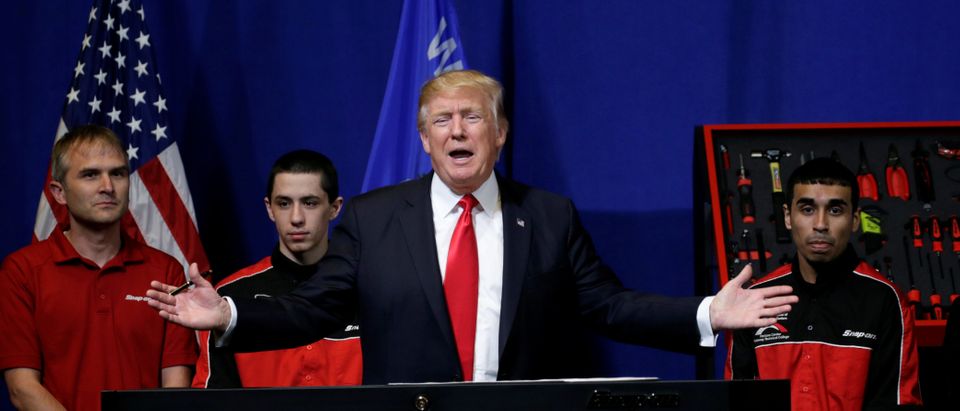President Trump’s crackdown on illegal immigration south of the border is only the most visible part of his strategy to protect American jobs from foreign competition.
Less well known is the president’s determination to keep high-skill technology workers from flooding the country under the H-1B visa program, displacing American engineers and computer programmers in the process.
For years, American companies have exploited the H-1B visa program to import hundreds of thousands of technology workers from countries like India and China.
Though only 85,000 foreign workers are supposed to be allowed in annually under H-1B, thanks to loopholes and special exemptions, the total number often surpasses 250,000. Typically, these workers are paid considerably less than the prevailing market wage; they’re also allowed to transition to permanent residency after their temporary contracts expire.
Abuses of the H-1B program are the stuff of legend. In one highly-publicized case, workers at the Disney Corporation were fired after they were tasked with training their lower-paid replacements.
In April 2017, Trump issued an executive order to federal agencies to “Buy American and Hire American,” with the H-1B program specifically in mind. At the time, Trump’s critics, including Democratic Sen. Chuck Schumer, said the executive order was “just words” and would not likely change much.
But a report released last month by the liberal National Foundation for American Policy (NFAP) says Trump’s quiet crackdown on H-1B is having a significant impact.
How? By forcing American companies to prove that native-born workers won’t be hurt by the program.
NFAP examined data obtained from U.S. Citizenship and Immigration Services (USCIS), the federal agency that oversees the entry of foreign residents. The group found a threefold increase in the number of H-1B applicants that were asked for additional evidence that the American workers would not be hurt if foreign-born workers were granted visas for similar jobs.
For example, in last quarter of 2017, 69% of H-1B applicants had received an additional “request for evidence” from USCIS compared to just 23% in the third quarter, the group found.
As a result NFAP found that more and more companies are opting out of their visa applications rather than risk being turned down. In the last quarter of 2017, Trump’s tighter visa guidelines had slashed the number of H-1B visa applications by more than 40%, according to the report.
Hardest hit were companies like Apple, Google and Microsoft — which, combined, account for over a third of new H-1B visa applications.
NFAP also found that Trump’s tougher guidelines had reduced the number of L-1 and O-1 visas that facilitate the transfer to the United States of foreign-born workers employed by American firms overseas as well as foreign-born workers demonstrating “exceptional” scientific talent.
While no one country was singled out for attention, Indian technology workers, who comprise the bulk of H-1B visa applications, were scrutinized the most. While 61% of non-Indians faced additional requests for evidence from USCIS, 72% of Indians did.


